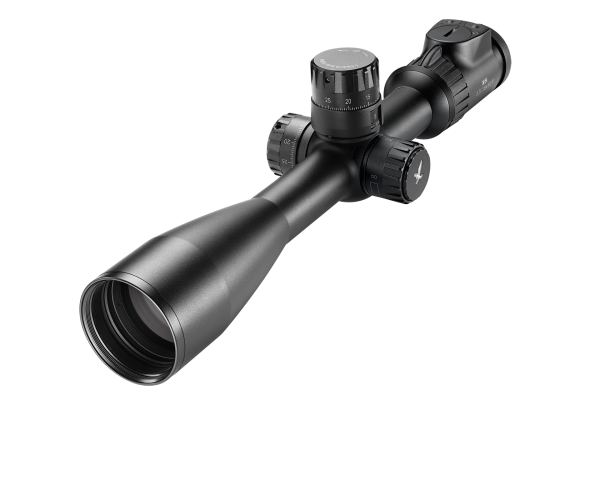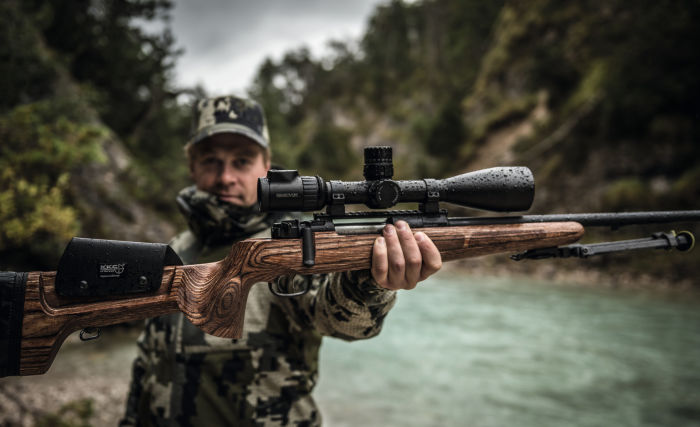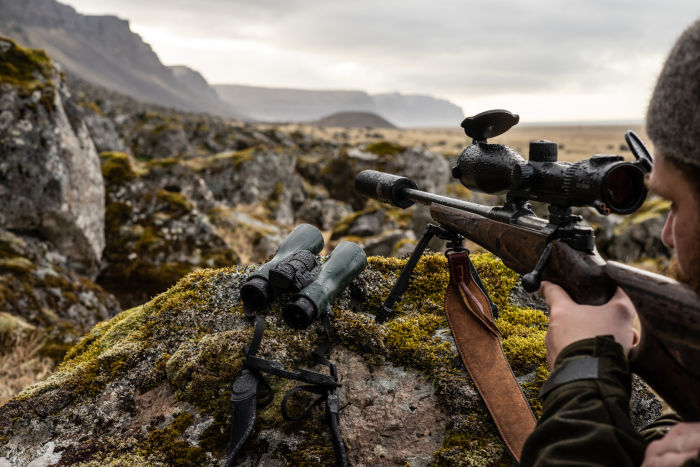
X5i 3.5-18x50 P 0,5cm/100m
The extensive adjustment ranges of this compact rifle scope allow you to achieve the longest distances effortlessly and accurately.

The extensive adjustment ranges of this compact rifle scope allow you to achieve the longest distances effortlessly and accurately.
This describes the amount of visible light that can pass through an optical system and is expressed as a percentage. The objective lens diameter specifies how much light can enter the optics. This makes it a key factor in an instrument’s performance, for example, in twilight. The bigger the objective lens diameter, the more light the objective lens can capture. The darker the surroundings, the larger the objective lens diameter needs to be. Check the precise product name as the number after the ‘x’ specifies the objective lens diameter in millimeters. A device with a suffix of 2-16x50, for example, has an objective lens with a diameter of 50 mm.


The extensive adjustment ranges of this compact rifle scope allow you to achieve the longest distances effortlessly and accurately.
 BRMm-I+
BRMm-I+ 4Wm-I+
4Wm-I+ X5i 3.5-18x50 P 0,5cm/100m
X5i 3.5-18x50 P 0,5cm/100m Customer ServiceMO - TH 8:00 - 17:00 AND FR 8:00 - 12:0000800 3242 5056customerservice@swarovskioptik.com
Customer ServiceMO - TH 8:00 - 17:00 AND FR 8:00 - 12:0000800 3242 5056customerservice@swarovskioptik.com